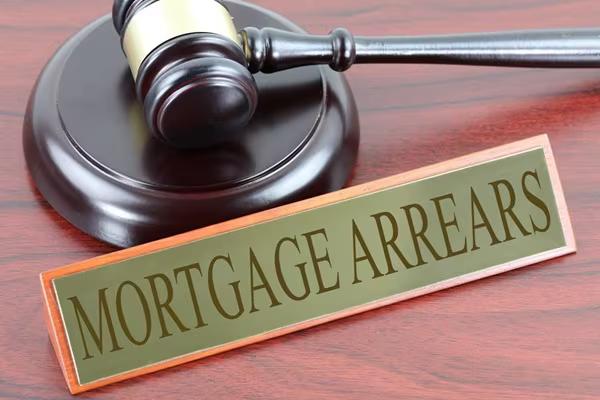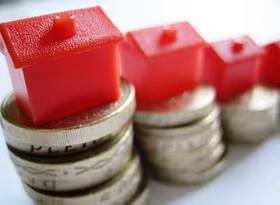This opinion piece was first published on Stuff on 11 March 2024.
The stock of homes available for purchase on realestate.co.nz increased in February to its highest level since 2015, as more people listed their properties for sale. In the last five years, monthly new listing numbers onto the market have only been higher than February’s total on three occasions – two of which immediately followed the first COVID-19 lockdown in 2020.
Despite a modest rally in house sales volumes during the first half of 2023, softer demand since October last year suggests there are currently few buyers in the housing market, constrained by affordability challenges. With less intense demand for buying property, the increase in people wanting to sell their property clearly isn’t a response to improving demand conditions.
Instead, data from Centrix shows that an increasing proportion of mortgages are in arrears. Those in stress look like they might be starting to sell up before they’re pushed into a mortgagee sale. At 1.47% of mortgages, this figure is well above the 1% proportion of lending that prevailed during 2022. However, despite mortgage stress now being at its highest level since before COVID-19, it is not out of line with the levels of mortgages in arrears between 2017 and 2019.
Losing money by buying at the peak of the market
For people who bought during the pandemic housing boom, the source of that mortgage stress is clear. For a December 2020 house purchase with a mortgage fixed for three years at 2.8%, property owners refixing at the end of last year would have faced a lift in annual repayments of between $5,700 on the West Coast and almost $21,000 in Auckland. Comparable repayment increases for a person who bought at the end of 2021 and fixed for two years at 4.3% ranged between $4,900 per year on the West Coast and over $17,000 in Auckland.
Although the lift in repayments is bigger for purchasers in 2020, it is the people who bought when house prices peaked at the end of 2021 who are actually in the most awkward financial situation. For example, a 20% deposit on the median-priced house in Wellington in December 2021 was $198,000. Facing an increase in repayments of $1,100 per month, if that person was now forced to sell their property, they would be likely to only get about $46,000 of their money back after the remaining mortgage is repaid (and that loss ignores the $93,500 in mortgage payments they’ve also made over the last two years). The numbers are almost as stark in Auckland, with a $155,000 loss of capital and $121,000 of mortgage payments over the last two years.
Only buyers in Otago, Southland, Canterbury, and Taranaki could expect to recover their original deposit from two years ago if they couldn’t meet their mortgage repayments and were forced to sell now.
Time for investors to cash up?
A less obvious dynamic in the housing market is the effect of the brightline test on investor behaviour. Labour’s extension of the brightline test from two years to five years in April 2018 meant that any investor who had purchased a property after that date was unable to sell it during the 2021 boom without facing a substantial capital gains tax bill. In our view, this restriction was instrumental in preventing a bigger decline in house prices during 2022 and into 2023. Rather than selling to realise the capital gains of the previous few years, thereby boosting the number of homes for sale and adding to the downward pressure on prices, many investors chose to stay in the market for the longer haul and suck up any decline in values as the market slowed.
Any investment property purchases from 2018 are now beyond the five-year threshold and can be sold without attracting capital gains. With mortgage rates at their highest level since 2008, some investors are likely to be under pressure and looking to sell – thereby contributing to the increasing supply of properties coming onto the market.
Hindsight is a wonderful thing, but it’s interesting to compare the capital gains for a sale now, five years after purchase, with the after-tax profit that would have been made on the same property if sold at the end of 2021. Across most regions, the decision to hold for another two years and ride out the market downturn was the right one, with the capital gains tax bill in 2021 proving to be larger than the subsequent house price fall (these calculations ignore operating costs and revenue in the meantime, such as rental income, mortgage payments, insurance, and rates). But for five regions, and most prominently for Auckland and Wellington, selling two years ago would have been better than trying to unload property now.
High seller numbers to limit house price recovery
With the Reserve Bank’s recent Monetary Policy Statement reiterating that interest rate cuts are still some time away, and with more investor properties ticking past the five-year brightline threshold this year, we expect the supply of homes for sale to keep increasing throughout 2024. Homeowners will continue to roll off lower fixed mortgage rates as well, leading to an increasing amount of mortgage stress. But buyers will remain limited – affordability constraints mean that a new buyer would need to spend almost 50% of their average household income on first-year mortgage repayments, something many might be unable to afford. Even if record high net migration results in some pick-up in buyer numbers this year, conditions look set to remain unfavourable for any substantial lift in house prices during 2024.







